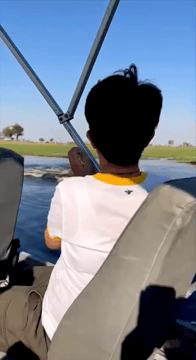
Savage A22 Timber Tactical Review: Your New Semi-Auto Sharpshooter for Rimfire Precision Table of Contents Savage A22 • Introduction to the Savage A22 Timber Tactical • Available Variants and Modifications • Caliber and Ballistics • Technical Specifications • Price and Market Position • Effective Range and Hunting Applications • Accessories and Customization Options • Pros and Cons Based on Real User Feedback • Why Shooters Choose the A22 Timber Tactical • Interesting Facts About the A22 Timber Tactical --- 🎯 Introduction to the Savage A22 Timber Tactical The Savage A22 Timber Tactical is a semi-automatic rimfire rifle chambered in .22 LR, designed for shooters who demand precision, reliability, and rugged aesthetics. Built on Savage’s proven A-Series platform, this rifle blends tactical features with traditional craftsmanship, making it ideal for both target shooting and small game hunting. Its OD Green laminate stock and spiral-fluted barrel give it a distinctive look, while the vertical grip and rear hook offer enhanced control for precision shooting. Whether you’re plinking at the range or stalking varmints in the field, the A22 Timber Tactical delivers consistent performance with every shot. --- 🛠️ Available Variants and Modifications The A22 Timber Tactical is part of Savage’s broader Timber Tactical lineup, which includes: • A22 Timber Tactical (.22 LR, semi-auto) – The flagship model for fast follow-up shots and rimfire accuracy. • B Series Timber Tactical (.22 LR, .22 WMR, .17 HMR, bolt-action) – For shooters who prefer manual cycling and expanded caliber options. While the A22 itself is only available in .22 LR, the B Series offers more versatility for those seeking magnum rimfire performance. Both models share the same OD Green laminate stock, 20 MOA Picatinny rail, and threaded muzzle for suppressor compatibility. --- 🔫 Caliber and Ballistics The A22 Timber Tactical is chambered exclusively in .22 Long Rifle (LR) — a classic rimfire cartridge known for: • Low recoil • Affordable ammunition • Effective range up to 150 yards • Ideal for small game like rabbits, squirrels, and foxes While not suited for large game, the .22 LR excels in target shooting, varmint control, and training scenarios. --- 📊 Technical Specifications Here’s a breakdown of the A22 Timber Tactical’s core specs: • Action: Semi-automatic, blowback • Caliber: .22 LR • Barrel Length: 18” heavy profile, spiral-fluted • Muzzle: Threaded 1/2x28 for suppressors or muzzle brakes • Magazine: 10-round rotary, flush-fit • Stock: OD Green laminate with vertical grip and rear hook • Rail: 20 MOA Picatinny for optics • Trigger: Savage AccuTrigger (adjustable) • Weight: Approx. 7.5 lbs • MSRP: $599 USD --- 💰 Price and Market Position At $599 MSRP, the A22 Timber Tactical sits in the mid-range of rimfire rifles. It competes with models like: • Ruger 10/22 Tactical • CZ 457 Varmint • Tikka T1x What sets the A22 apart is its semi-auto action, tactical ergonomics, and factory-installed features like the 20 MOA rail and threaded barrel — features often requiring aftermarket upgrades on competing rifles. --- 📏 Effective Range and Hunting Applications While the .22 LR cartridge limits long-range capabilities, the A22 Timber Tactical is highly effective within its intended range: • Effective range: 50–150 yards • Ideal targets: Rabbits, squirrels, raccoons, foxes • Shooting disciplines: Rimfire competitions, steel challenge, plinking Its semi-auto action allows for quick follow-up shots, making it especially useful for moving targets or multiple engagements in pest control scenarios. --- 🧰 Accessories and Customization Options The A22 Timber Tactical is built for modularity: • Optics: 20 MOA Picatinny rail supports scopes, red dots, and night vision • Suppressors: Threaded barrel accepts standard .22 LR suppressors • Bipods: Dual forward sling studs allow for bipod mounting • Slings: Rear hook and studs support tactical or hunting slings • Triggers: AccuTrigger is adjustable, but aftermarket options are available Note: As a rimfire rifle, chokes are not applicable — they’re used in shotguns, not rifles. --- 👍 Pros and 👎 Cons Based on Real User Feedback Pros: • Smooth semi-auto cycling with minimal recoil • Excellent out-of-the-box accuracy • Durable laminate stock with tactical ergonomics • Threaded barrel and optics rail included • Reliable feeding from rotary magazine Cons: • Limited to .22 LR only • Heavier than polymer-stocked competitors • No iron sights included (optics required) --- 🧠 Why Shooters Choose the A22 Timber Tactical Hunters and sport shooters choose the A22 Timber Tactical for its blend of tradition and innovation. It’s a rifle that feels premium without breaking the bank, offering features typically reserved for higher-end platforms. Whether you’re a seasoned marksman or a beginner looking for a reliable rimfire, the A22 delivers performance, style, and versatility. --- 🤯 Interesting Facts About the A22 Timber Tactical • The spiral-fluted barrel not only reduces weight but improves heat dissipation during rapid fire. • Savage’s AccuTrigger system allows shooters to fine-tune trigger pull without gunsmithing. • The OD Green laminate stock is both weather-resistant and visually striking — a nod to tactical aesthetics with field-ready durability. --- Final Thoughts The Savage A22 Timber Tactical is more than just a rimfire rifle — it’s a precision tool for shooters who value accuracy, reliability, and modern design. With its semi-auto action, tactical features, and rugged build, it’s ready for the field, the range, or the competition line.
Post: 23 September 11:34














































